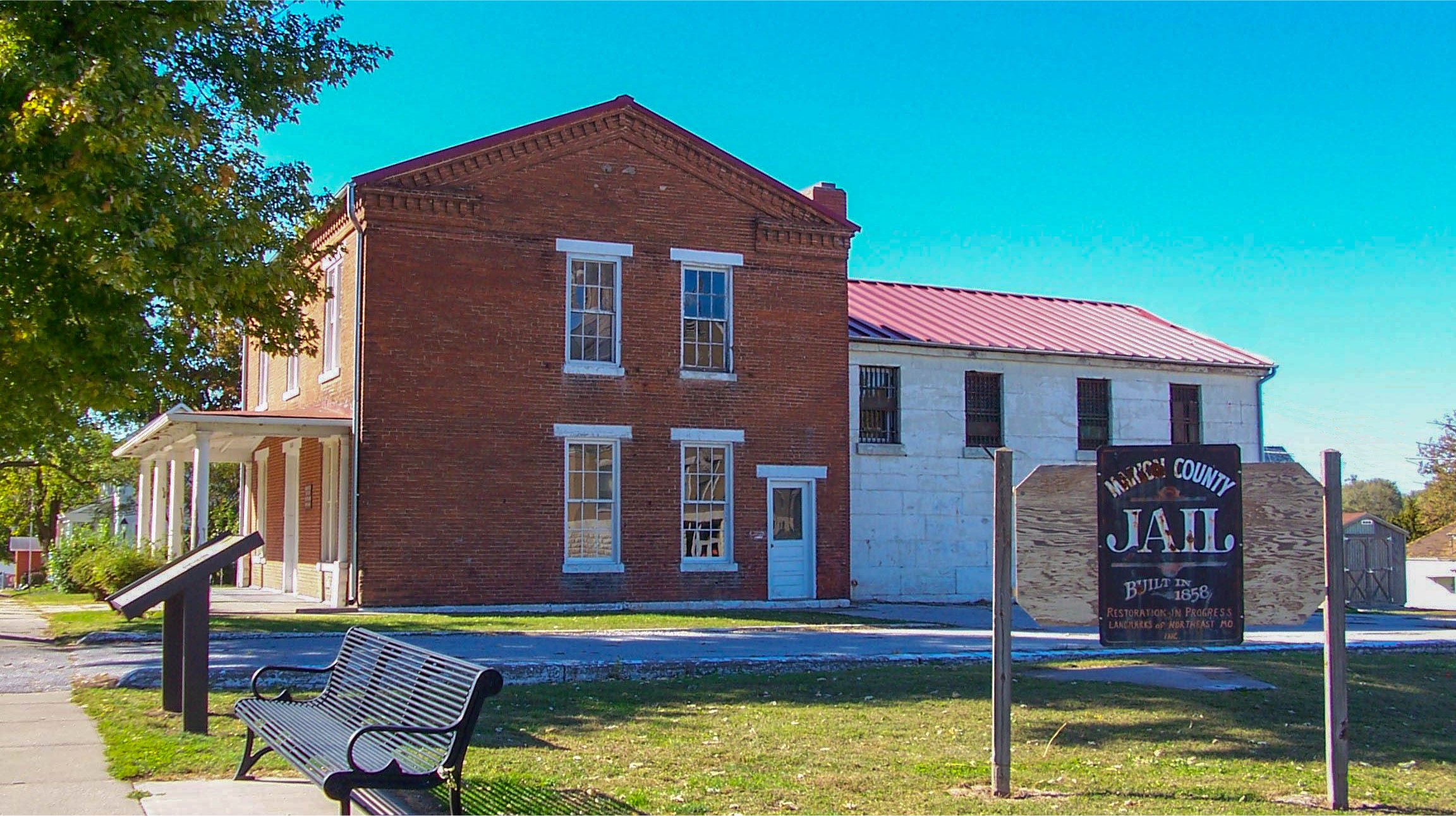Visitors Guide to Palmyra
Marion County, Missouri
"The Flower City"
Marion County Courthouse
The Old Marion County Jail
Palmyra is located seven miles west of the Mississippi River on a natural rock foundation that contains a clear, sweet spring. By the time European settlers arrived in the area in the early 19th century the site had been a popular Sac and Fox campsite for many years. The first settlers to the area were Kentuckian Benjamin Vanlandingham and his family, who shared the spring with the natives. A replica of their 1818 log cabin can still be seen today, near the Big Spring.
In 1812 a survey was taken to indicate the size and shapes of the new counties that were to be partitioned from St. Charles County. In 1819 Palmyra was platted by four men who intended that it become the county seat of the future Marion County. The town's name refers to a biblical-era oasis city of Tadmor along a desert caravan route between Syria and the upper Euphrates and called Palmyra (Palm City) by the Greeks and Romans. Palmyra prospered after it was selected the site of the first land office in northeast Missouri in 1825 and the Marion County seat in 1826. Economic growth continued with the arrival of the Hannibal & St. Joseph Railroad in 1857 and of the Palmyra & Quincy in 1860.
The Civil War found Palmyra and Marion County divided and a hot bed of fighting. In 1862 Col. Joseph E. Porter of the Confederate Army was roaming the countryside and in September succeeded in raiding Palmyra, releasing prisoners kept in the Marion County Jail, and capturing a few of his own. Among them was Andrew Allsman, a Union sympathizer who had the reputation of betraying neighbors sympathetic to the Confederacy to the local militia. Col. John McNeil, the commander of the Union forces, publicly demanded Allsman's return. Porter reportedly freed Allsman and dispatched an escort to see him safely to a road leading to Palmyra but Allsman was never seen again. When Allsman failed to return McNeil ordered the execution of 10 Confederate prisoners, which was carried out on October 18, 1862. A granite monument was erected in their memory on the grounds of the courthouse in 1907.
Palmyra has been called the Handsomest City in North Missouri and has over 200 antebellum structures in a variety of architectural styles with six buildings individually listed on the National Register of Historic Places. Among these homes are the 1869 Italianate Darwell House, the childhood home of Jane Darwell, who won the winner in 1940 of an Academy Award for her role as Ma Joad in “The Grapes of Wrath,” and the 1855 P. J. Sowers Home, which was once the home of William Russell, one of the founders of the Pony Express. During the warmer months visitors can pick up walking tour maps at the Gardner House on Main Street during the warmer months. The Gardner House (photo left) has served as a stagecoach inn, tavern, private school, a private residence, and now is home to a museum and visitor center.












